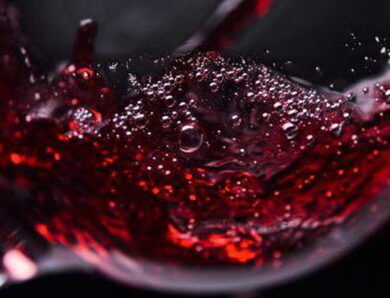Tequila from moonshine: two best recipes for home cooking
Експерименти в виробництві різних міцних напоїв на основі самогону — захоплююча річ. Therefore, many distilleries at home, rather than laboratory conditions make quite a decent brand, gin and even absinthe. Why not indulge in the favorite alcohol of hot Mexicans - tequila? It is unlikely to get the necessary raw materials for its production, but it is still possible to make a perfectly acceptable imitation.
How and what to make a Mexican drink
Tequila bottling plant
The original Mexican tequila comes from the plant, which can only be found in Mexico, - blue agave. For some reason it is considered, that it is a cactus, although in reality it belongs to the asparagus family. This overgrown asparagus has a longer leaf length 2 meters, so it is unlikely to grow at home.
Agave contains a special substance - inulin, which during fermentation breaks down into glucose and fructose. The extracted juice of the plant is mixed with water, flavored with yeast and fermented. After that, the brew is subjected to double distillation exclusively by distillation. That is why tequila retains a pronounced taste of blue agave.
After distillation, the strength of the alcohol is about 55 ° poured into oak barrels, where they insist for a long time. There are varieties of tequila, which do not stand - Tequila Blanco and Tequila Joven. In the second for color and taste add agave molasses or other caramel sweeteners. But true connoisseurs appreciate tequila from the barrel, which was insisted on for at least a year.
complex recipe
Because natural overseas agave can not be obtained, you can make tequila from plants, which also contain inulin, - dandelion roots, chicory or Jerusalem artichoke. The latter is preferable, because it can be bought in a store or grown in the country.
- Peeled tubers need to be crushed (cut into cubes about a centimeter in size).
- To the resulting mass you need to add water in the ratio 1: 1 and any food acid (if it is possible to measure, then bring the acidity to pH = 3). You can add pectinase (volume in 3 times bigger, fruit knife).
- After that you need to cook our Jerusalem artichoke at a temperature of at least 60 ° until then, until a brown tint appears (as on a slice of apple). This means, that Jerusalem artichoke tequila wort is almost ready.
- As soon as the "porridge" cools down to +25 ° C, we add yeast to it and send it to ferment. Approximately fermentation will continue 1,5 gained, but it is better to determine the end of the process to taste. If there is no sweet taste, and clearly smells of alcohol, homemade tequila brew is ready.
- Next, distill the raw material with the separation of "heads" and tails "twice. Intermediate cleaning is recommended for charcoal. To improve the taste, you can insist on oak chips and add caramelized sugar.
simple recipe
You can make tequila from aloe vera leaves by simple infusion. It will be much easier and rather, and in addition, the output will be a more authentic taste.
It will be necessary:
- homemade aloe leaves - 50 city;
- moonshine (fortress close 55 °) — 1 liter;
sugar or caramel sugar - 15 city.
- We grind aloe in any way - even from large pieces the juice separates well.
- Sugar, aloe and moonshine mix in a jar, close it with a lid.
- Insist drink in a dark place at least 2 weeks. Gradually chlorophyll decomposes (in the light the process is faster), and the future green tequila will turn yellow-golden.
- Strain through cotton pads or other fine filter and defend more 1 days.
Importantly: some varieties of aloe vera give too much bitterness. It will become smaller after additional filtration, adding sugar and settling (without leaves)
to summarize
If you make tequila from Jerusalem artichokes or other plants in the fermentation process, you can get the original homemade alcohol only remotely reminiscent of tequila. Insisting on aloe makes moonshine more like tequila, and in some cases the drink turns out, very similar to the original. Experiment, and you will definitely get a delicious and inexpensive drink.

